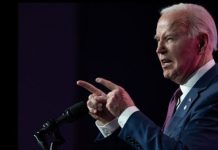
April 26 (UPI) — Texas Sen. Ted Cruz has introduced the “El Chapo Act,” a bill that would use the estimated $14 billion in assets owned by Mexican drug lord Joaquin “El Chapo” Guzmán to build a border wall.
“Today I introduced the El Chapo Act, which reserves billions in forfeited assets to pay for border security,” Cruz said in a statement on Tuesday.
The Ensuring Lawful Collection of Hidden Assets to Provide Order Act — or the El Chapo Act — makes reference to Guzmán, who was extradited from Mexico to the United States in January.
Guzmán pleaded not guilty to 17 criminal charges related to his drug empire — including corruption, murder, conspiracy, drug importation and money laundering.
Cruz said that, if convicted, Guzmán’s forfeited expansive wealth would be redirected for use to build a border wall and to enforce border security, instead of for use by the U.S. Department of Treasury for unspecified reasons — a standard procedure when assets of drug traffickers are seized.
Cruz said that forfeited funds from other drug cartels could also be used.
“Senator Cruz estimates one drug lord alone may be worth $14 billion in confiscated funds. That would be good start toward paying for wall,” former House Speaker Newt Gingrich said in a statement. “Ted Cruz is exactly right to focus on confiscating Mexican drug money to pay for the wall. What a grand and fitting irony.”
Guzmán’s Sinaloa Cartel is credited with dominating the illegal drug market in nearly the entire United States. “El Chapo” — meaning “The Short One” or “shorty” — so dubbed because of his 5-foot-6-inch frame, was detained in Guatemala in 1993 and then extradited to Mexico to face murder and drug trafficking charges.
He escaped from prison in 2001 by hiding in a laundry cart after bribing prison guards, and was re-captured in February 2014. He was captured a second time in the city of Los Mochis in his home state of Sinaloa on Jan. 8 after escaping from Mexico’s Altiplano Federal Prison on July 11, 2015.






